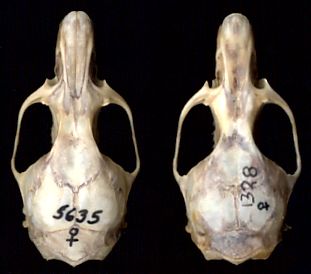

Life used to be simple back in the good old days, when people meant what they said and said what they meant. Right? Maybe, but the real world has a way of making meanings fuzzy.
The term "species" is an important concept to biologists, but even in the world of science, definitions can be blurry and arguable. Species generally are thought of as populations who can breed among themselves but can't breed with other groups. Works fine—until you run into organisms that don't reproduce sexually or can't be tested because they're in different geographic areas. Then, traditionally, you depend on how they look—their morphology.
But, learning more about genetics, we've come to appreciate that
this doesn't always work, either. Recent research indicates that populations of
White-throated Packrats east and west of the Rio Grande actually are cryptic, meaning
hidden, species; they look the same but are reproductively isolated and not descended
from the same parent species. Evolution is a messy, complicated process—and we can be
assured that the definition of species will continue to be fuzzy.

Contributor: Arthur H. Harris, Laboratory for Environmental Biology, University of Texas at El Paso.
Desert Diary is a joint production of the Centennial Museum and KTEP National Public Radio at the University of Texas at El Paso.

Packrat skulls (in general, the skull is the most used morphological unit for determining relationships). The skull on the left is from the Peloncillo Mts., west of the Rio Grande in New Mexico near the Arizona border. The skull on the right is from the Franklin Mts. of Texas, east of the Rio Grande. Molecular evidence now indicates that these are two separate species despite the great morphological similarity. Skulls scanned by A.H. Harris.
Edwards, C. W., C. F. Fulhorst, and R. D. Bradley. 2001. Molecular phylogenetics of the Neotoma albigula species group: Further evidence of a paraphyletic assemblage. Journal of Mammalogy, 82:267-279.